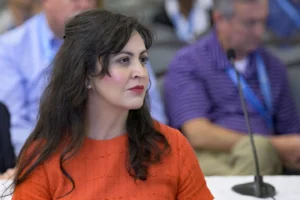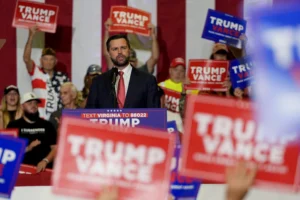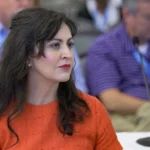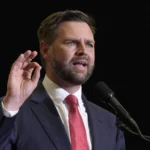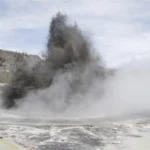REPORTER’S NOTEBOOK: A Day in the Life of a D.C. Political Correspondent
The Wyoming Truth’s Washington reporter takes you inside the political circus in the nation’s capital
- Published In: Politics
- Last Updated: Sep 25, 2023
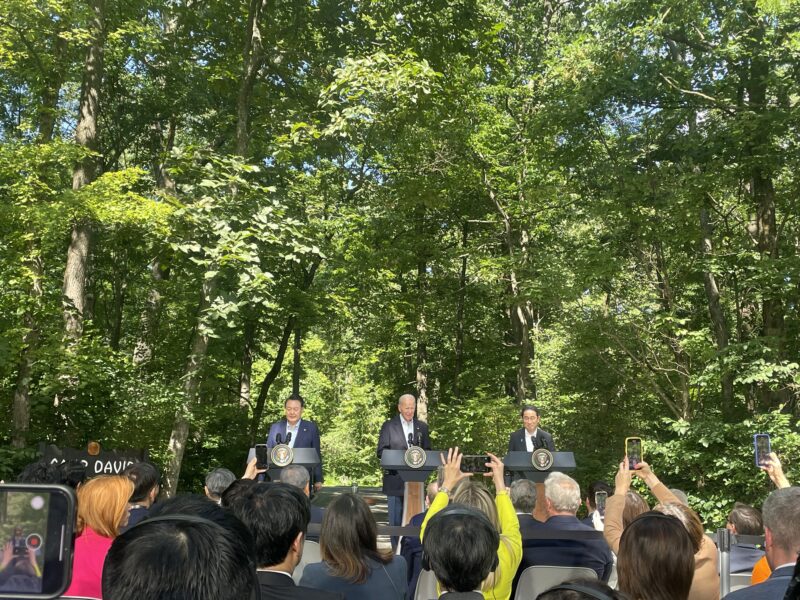
Jacob Gardenswartz, the Wyoming Truth's award-winning Washington correspondent, recently covered an historic summit of East Asian leaders at Camp David. (Photo via Jacob Gardenswartz)
By Jacob Gardenswartz
Special to the Wyoming Truth
WASHINGTON — The night before I was set to embark on a reporting trip to cover President Joe Biden’s historic summit with East Asian leaders at the Camp David presidential retreat, I thought I had planned for every contingency.
I knew what I’d wear: a gray suit and blue tie, a classic and understated color combination to respect the history of the storied venue.
I knew what question I’d ask if I were called on at the press conference: how the Biden administration is responding to China’s growing accumulation of American farmland, a top priority of the Wyoming congressional delegation.
I’d even packed some snacks and a pillow for the eight-hour round trip from the White House to Camp David, as buses drove a group of about 100 reporters up the winding roads of Maryland’s Catoctin Mountains.

But one thing I hadn’t planned on? The frenzy over a small corner dubbed by Politico to be “America’s most exclusive gift shop.”
After passing through our third security checkpoint — complete with a bomb-sniffing German Shepherd and several gun-toting Marines — we arrived at the Press Filing Center (or PFC), a staple of most off-site presidential visits. Traditionally, it’s just a large room with tables, chairs and coveted electric outlets so reporters like me can have a quiet place to sit and write our stories.
This time, however, inside the large hangar — where, we learned, the president’s Marine One helicopter was stored during Biden’s visit — sat two tables rife with Camp David memorabilia you can’t find anywhere else: blankets and T-shirts and sweaters and keychains and mugs galore, a veritable Santa’s workshop full of presidential tchotchkes.
But our shock and excitement at the unexpected display soon turned to dread, as we realized that reporters from the Japanese and South Korean delegations had beat us to the punch and were already scooping up the offerings. Flanked by friends and former colleagues from other media outlets, I raced to the line and picked through what was still left — mostly size XXL sweaters and other less desirable items. Behind me, others haggled over the last of the mugs like they were bottles of hand sanitizer in a COVID-era Costco.
The episode, trivial as it may have been, epitomized a central truth in journalism: no matter how much planning and preparation one puts in, there will always be things which are simply unforeseeable. The best reporters thrive in such environments, rendering a “first rough draft of history” that summarizes and contextualizes breaking news even in the most trying of circumstances.
From Wyoming to the White House and well beyond
For me, there is no such thing as a typical day of work, though there are some constants. My workday begins not in the morning but the evening prior, when the White House and majority leaders of the U.S. House and Senate release the “daily guidance” — their public schedules with events open for coverage. From there, it’s a complicated logic puzzle to determine which events are worthy of attending, how those square with any interviews I have for longer-term stories I’m working on and how to navigate D.C.’s notorious traffic to ensure I can get everywhere I need to on time.
My morning starts around 7 a.m. with copious amounts of cold brew coffee and a quick trip to the neighborhood dog park, where I skim through press releases and email newsletters from the night before. In the shower, I tune into NPR to hear which stories are primed for the national agenda.
Then it’s off to the races. On a given afternoon, I could be at the White House for a press briefing or an East Room event, at the Capitol for committee hearings or interviews with lawmakers, on a “background” call learning about an upcoming policy announcement or sitting in a coffee shop writing a story on deadline.
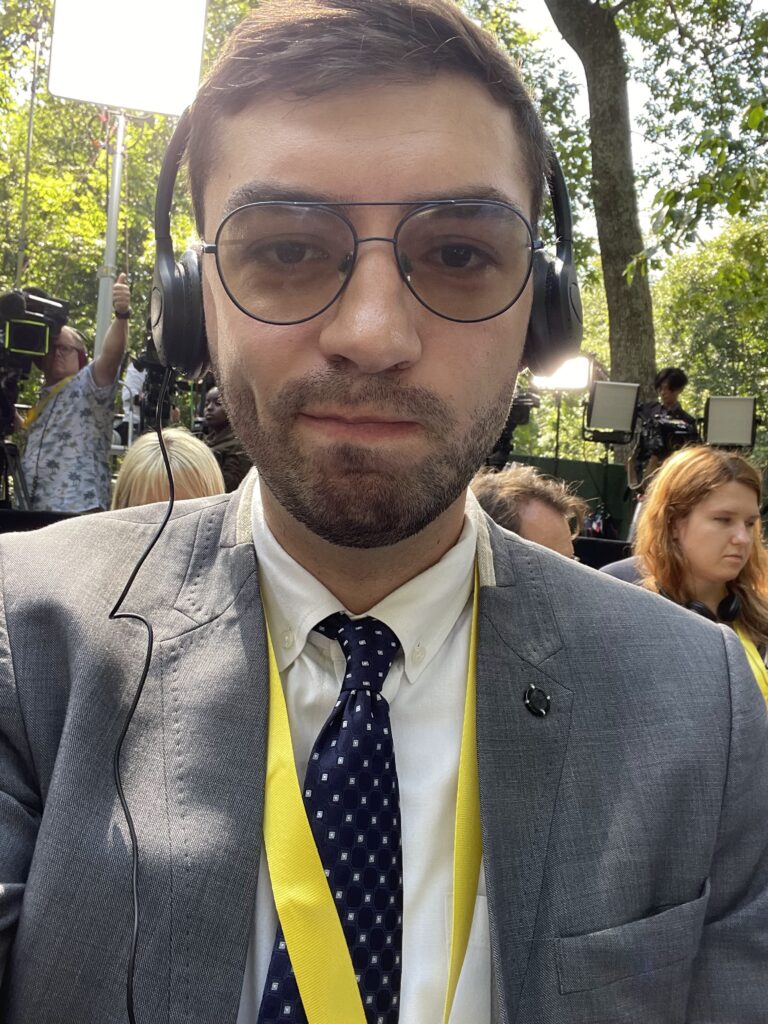
Usually, it’s some combination therein.
One thing that is consistent especially since the Jan. 6 insurrection: security. Entering the White House or Capitol complexes require badge checks, trips through metal detectors and, depending on the mood of the Capitol Police or Secret Service, occasionally a personalized pat-down.
Walking into the West Wing or Capitol Rotunda, it’s hard not to become inured to the majesty of these historic locations. The James S. Brady Press Briefing Room, for example, is much smaller than it appears on TV, and until a very recent remodel, it was infested with rodents and pests — no doubt stemming from the location’s previous existence as President Franklin D. Roosevelt’s swimming pool.
The press areas at the Capitol aren’t much better. While the upper levels of each chamber are known for their distinctive architecture, much of reporters’ time is spent chasing lawmakers through the underground echoey and confusing basement hallways that span multiple city blocks and connect buildings. Despite having covered Washington for years now, I still find myself lost at times trying to get back to the surface.
Like any job, the days can be stressful and monotonous: maybe I’m running late for an interview or spilled coffee on my suit or forgot my press pass at home or bickered with another reporter about who gets the better seat in a press conference.
But when I’m able to overcome the daily stresses and really cherish the moments, there’s nothing else like it. I’ve had the privilege to witness history in the making — treaties signed, legislation approved and elections called. I’ve questioned presidents, press secretaries and senators. I’ve traveled to parts of the country I likely never would have otherwise and met Americans of all stripes. It’s a tough, grueling profession, but I wouldn’t change it for the world.
How politics impacts people
In the 16 months since I started writing about politics with a Wyoming focus, I’ve covered a lot: former Rep. Liz Cheney (R-Wyo)’s tenure overseeing the Jan. 6 investigation and her ouster from elected office; the election of Rep. Harriet Hageman (R-Wyo.) and her ascendancy to conservative stardom; the reversal of Roe v. Wade and Wyoming’s subsequent attempts to ban abortions; the state legislative session and the many important policy changes resulting from it; ongoing efforts to respond to climate change and the political and economic challenges they pose; the indictments of former President Donald Trump and what they mean for the 2024 presidential campaign; and many more topics.
Some stories I had months to work on, others just a few hours. Some were collaborations with other Wyoming Truth contributors. Some earned me and the Wyoming Truth regional and national accolades. Some were filed from airplanes, busses, cross-country road trips and small-town diners. But through it all, my focus has always been the pursuit of truth, without fear or favor.
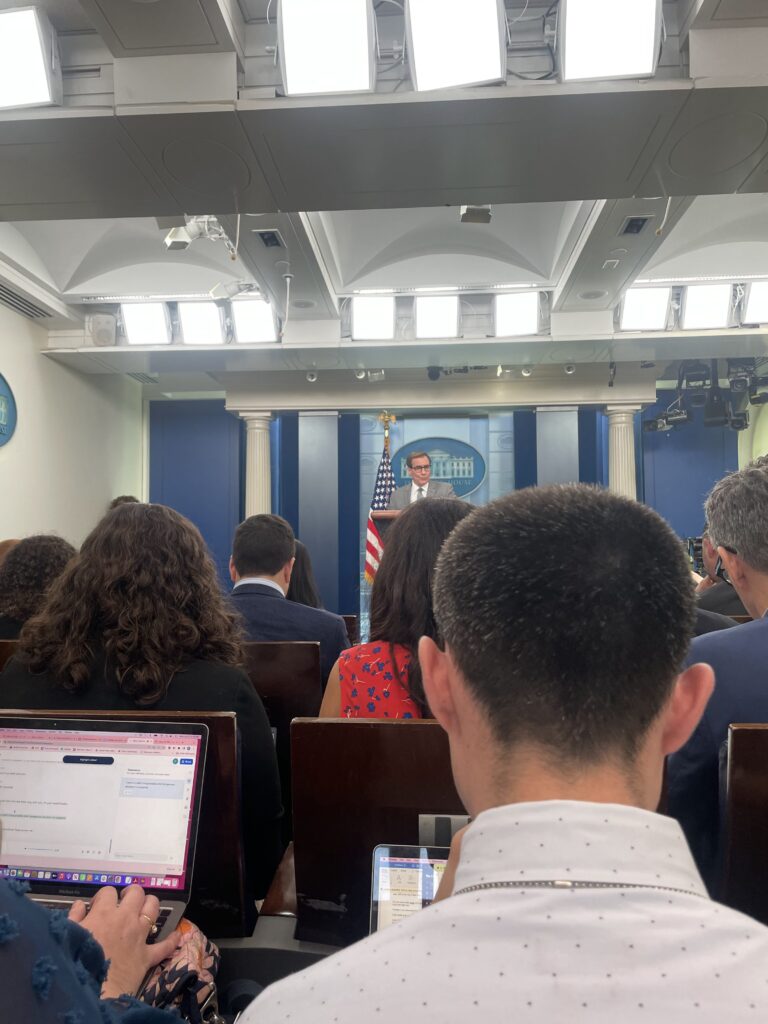
Achieving such a task is never an easy feat. More often than not, the most difficult parts of my reporting process have had nothing to do with figuring out what stories to cover or which questions to ask and everything to do with how to gain access to the newsmakers and political forums themselves. It can take months to build relationships with lawmakers and their staffs—and convince them to take my questions or share newsy announcements.
At the end of my writing process — after I’ve left the White House or Capitol, transcribed my interviews, found all the relevant statistics and written most of my story — I ask myself a simple question: if I weren’t a reporter physically present for the event, why would I care about this?
It’s a lesson I gleaned from an editor years back who looked critically upon the high proportion of Washington coverage that emphasizes procedural developments over substance. To be sure, there’s value in reporting on how a bill works its way through committee to become a law. But to this editor — and to me by extension — significantly more important is what that law will mean to the millions of Americans it might impact.
I’ve tried to keep this focus on how policy impacts people central to all my work with the Wyoming Truth. I like to believe I’ve helped explain what’s at stake in the many partisan battles I cover day in and day out, not just who’s on which side.
At Camp David, this people-focused reporting meant focusing on what the historic agreement Biden signed with his East Asian counterparts meant for Wyomingites who lived thousands of miles away, emphasizing the impacts it could have on members of the military serving abroad and nuclear energy development back at home.
I’ve learned time and again that the most rewarding part of my job isn’t the access to exclusive locations, but instead the unique conversations I have with Americans about their thoughts and needs. Political reporting is a grueling job, but it’s those conversations that make it worthwhile — and hey, a unique keychain now and again sure doesn’t hurt.

